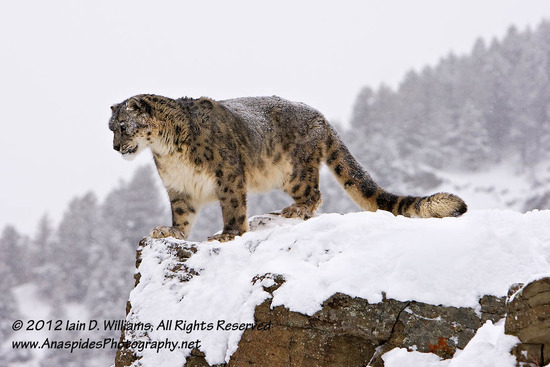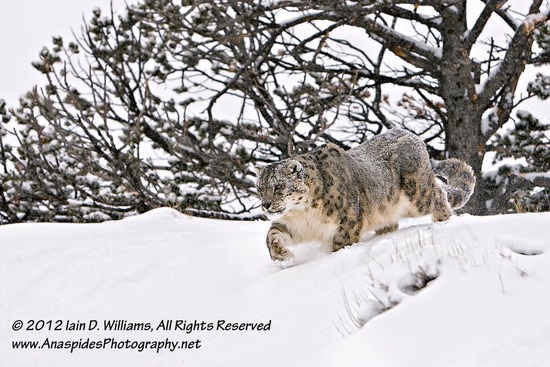 I recently returned from a three week diving trip to Indonesia. I wanted to dive some of the lesser visited areas in the Alor region; an area renown for its very strong “switch-back” currents, eddies, and up-wellings. A switch-back current is a current that proceeds in one direction at the surface but changes direction below the surface. Often these currents are difficult to identify and can alter direction and velocity without any apparent “localized” reason.
I recently returned from a three week diving trip to Indonesia. I wanted to dive some of the lesser visited areas in the Alor region; an area renown for its very strong “switch-back” currents, eddies, and up-wellings. A switch-back current is a current that proceeds in one direction at the surface but changes direction below the surface. Often these currents are difficult to identify and can alter direction and velocity without any apparent “localized” reason.
Diving a Steep Wall and Point
I was diving on a steep wall which plummeted down to some unfathomable depth. The dive began along the wall in the sheltered region of the reef. My partner and I descended to around 25 meters making our way to the point of the reef which jutted out into the blue. Reaching the point at around 32 meters we swam directly out into the blue water to observe large Dog-toothed Tuna and Spanish Mackerel and the odd shark that patrolled the point.
Closely watching bottom time (the time allowed at a certain depth with minimal chance of decompression sickness), we proceeded back to the wall to ascend to where a break-through was located. The idea was to swim through the break-through and ascend slowly over sand to a shallower depth to the complete a safety stop.
Is that a Current Developing?
The current developed literally from nowhere. At first it was mild and swimming against the current wasn’t an issue. I’d be watching a school of barracuda hanging behind us and a lone shark swimming lazily behind the school. Stopping and securing my self to the sandy floor with my fin depressed into the sand, I waited for a photograph. Several minutes transpired until I thought I’d captured a decent photograph.
Meanwhile, the current increased in intensity and angling downwards, began to drag anything along with it. Swimming “cross-tack” like a sailboat in the wind, we proceeded over the sand, hiding behind the lee of a coral bommie for a quick “breather”. I was a little slower than the others as apart from taking photographs of the barracuda; I was dragging a heavy Subal housing and twin strobes through the water.
The current then altered course and began to sweep the sandy sea floor perpendicular to the wall; our reprieve behind the bommie quickly disappeared as I and three other divers were propelled along the sand – back to slightly deeper water (15 meters). Frantically we clawed our way, at a ninety degree angle to the current, along the current swept rubble-like bottom to shallower water. Finally, we reached the safety of the lee of a bommie allowing us further reprieve from the current. This was at 10 meters water depth.
Low Air
Everyone’s air supply was marginal at this stage; mine was sitting on 100 BAR – certainly there was enough air to complete the dive safely without current, but the exertion of swimming in the current had increased consumption markedly.
The current continued to increase in intensity and it was now impossible to swim against the current or perpendicular to it; it was too strong. Even turning your head sideways to the current was a recipe for disaster, as your face mask was almost sucked from your face. Looking at my dive partner I saw that her yellow snorkel was quivering like an Indian’s arrow head in a bowl of jelly. The sand on the sea floor was whipped up like a, Iraqi sand storm!
 Entangled, Iraqi Storm and Low Air
Entangled, Iraqi Storm and Low Air
One by one, we let go of the bommie to literally fly across the sand making our way to a shallower depth for the mid-water safety stop. This was when my problem occurred. As I let go of the large piece of coral rubble, the current propelled me into an unseen coral bommie behind me. My regulator and high pressure hose (despite being clipped closely to my body) became entangled in the coral. Turning my head, I could see my dive partner looking at me, but it was impossible for her to reach me in the now raging current.
LEFT: Lone silver tip shark swims behind schoolling barracooda.
Air Alarm – “Bingo Fuel”
Worse was to come, for as turned my head to look for my partner, the regulator was torn from my mouth; I could not reach it. The current had extended the hose which had become caught in the coral. I reached for my alternate air source, pulled it from its reciprocal and breathed some welcome air.
The air alarm then began to flash and send its “beep beep beep” aural message to warn be I had reached, what pilot’s call “bingo fuel” – 60 BAR, enough air to reach the surface and do a safety stop with a little to spare. I always was at the safety stop at 50 BAR. Now I was caught in coral at 10 meters! The reason for the low air alarm became evident when I reached for my alternate air source; it was free flowing due to the current depressing the purge button!
My heavy Subal camera housing and twin strobes were angled away from me in the direction of the current. The camera was acting as a sea anchor stopping me from disentangling the regulator hose and HP Hose from the coral. The camera housing was attached to by BCD by a quick release clip – should I release the clip? Fighting the current, I attempted to disentangle myself to no avail.
Should I Dump the Camera and Make a Free Ascent ?
Looking towards the surface I noted my dive partner had aborted her safety stop and had surfaced. She was being propelled up, down and over, by the large surface waves the current had generated – at least she was on the surface and relatively safe. I began to debate whether a free ascent maybe the only option, as my air was precariously low at this stage. The surface was churning mass of white water…..
I released the camera housing from my BCD and watched as the camera bounced along the sand to become lodged in a crevice of a rock; the strobe and arms shuddering in the current, but the housing seemed to stay put. Relieved of the sea anchor, I quickly disentangled the regulator, which was relatively easy after removing the drag of the camera housing, changed my air supply back to my main regulator and began to deploy my safety stop anchor.
Letting go of the bommie, the current propelled me along the bottom. I literally flew toward my camera, grabbing it and clipping it back onto my BCD. I had just clipped in when the current pushed me against another coral bommie. I was careful not to repeat the previous experience and began to inflate the safety anchor balloon with my alternate air source. I wanted the dive boat to know where I was located.
Balloon rushes towards the Surface
The partially inflated balloon speed to the surface as the air expanded due to decreasing pressure, but the current was too strong and the line deployed at a 30 degree angle. The spool which held 50 meters of line was spinning crazily as the line deployed in the current. Air was low, the alarm having stopped at 20 BAR. I didn’t have the time to retrieve the line. I pushed off from behind the bommie and used the current to propel me in a controlled manner towards the surface – maintaining contact with the line and safety anchor balloon, which by this time had been collected and secured to the dive boat which awaited me at the surface. Completing my safety stop at 5 meters was uneventful other than watching the world fly by at 15 knots and watching my air gauge indicate 2 BAR!
Unavoidable
Looking back at the experience, was it avoidable; probably not. The currents in this area are susceptible to change at short notice and are known for their ferocity.
The currents are one reason why the diving is so good at locations such as this, as where there are currents there are big fish which predate on smaller fish and so forth. Some dives it feels as if you’re swimming in an ecosystem surrounded by a hive of aquatic activity.
Certainly my air supply was marginal; however, I lost probably 30 BAR of air as a result of the purge button on my alternate air source being depressed by the current.
It's a Pity
It's a pity I didn't shoot a few frames of underwater video to show the ferocity of the current. I was far too busy dealing with other more important things. However, here is a short video clip, taken from the dive boat, showing the strength of the currents in this area.
Indonesia Currents, Alor Region from Anaspides Photography on Vimeo.
Training and Experience
SCUBA diving, like photography is relatively easy, until the situation gets beyond the norm. It's then that training and experience pay dividends.
Training is not everything; you can have twelve dive cards from open water to specialty diver and still be inexperienced, although you may believe yourself adequately prepared. Certainly, nearly anyone can dive in good weather and sea conditions. It's only when those conditions alter that problems may arise. It an unfortunate aspect of diver training that many unhealthy, overweight individuals receive diving cards because they have the ability to "pay" – rather than the ability to perform.
All the divers in my small group were highly skilled and experienced, ranging from Dive Master to Instructor level with each over 2000 logged dives.
 Wednesday, January 16, 2013 at 10:03PM
Wednesday, January 16, 2013 at 10:03PM  Update 2012-2013 in
Update 2012-2013 in  Update
Update 










